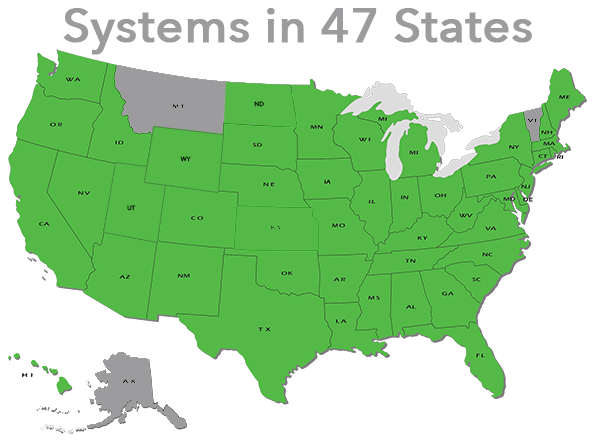What are greenhouse gases and how much are emitted by the United States?
Last Updated: August 7, 2014
Greenhouse gases trap heat from the sun and warm the planet's surface. Of all U.S. greenhouse gas emissions the majority are related to energy production and consumption; specifically most of those are carbon dioxide (CO2) from the burning of fossil fuels. From 1990 to 2013, energy-related carbon dioxide emissions in the United States increased on average by about 0.3% per year.
Because greenhouse gases trap radiation (heat) from the sun and warm the planet's surface, a certain amount of these gases are beneficial (see "Did you know?"). But as concentrations of these gases increase as a result of human activity, more warming occurs than would happen naturally.
What specific kinds of greenhouse gases does the United States emit?
The major greenhouse gases the United States emits as a result of human activity and that are included in U.S. and international emissions estimates are:
Carbon dioxide (CO2) Methane (CH4) Nitrous oxide (N2O) High-global warming potential gases, which are: Hydrofluorocarbons (HFCs) Perfluocarbons (PFCs) Sulfur hexafluoride (SF6)There are other greenhouse gases that are not counted in U.S. or international greenhouse gas inventories:
Water vapor is the most abundant greenhouse gas, but most scientists believe that water vapor produced directly by human activity contributes very little to the amount of water vapor in the atmosphere. For that reason EIA does not estimate emissions of water vapor. Ozone is technically a greenhouse gas because it has an effect on global temperature. However, at higher elevations in the atmosphere (stratosphere), where ozone occurs naturally, it is needed to block harmful ultraviolet (UV) light. At lower elevations of the atmosphere (troposphere), ozone is harmful to human health and is a pollutant.How much of U.S. greenhouse gas emissions are energy related?
Of the total amount of U.S. greenhouse gases emitted in 2013, about 84% were energy related and 92% of those energy-related gases were CO2 emissions from the combustion of fossil fuels. In 2011 (the latest year complete country data is available), the United States was the second-largest contributor of energy-related CO2 emissions, after China, and was followed by Russia, India, Japan, and Germany.
Which fuel accounts for the largest share of energy-related CO2 emissions?
Petroleum is the largest source of CO2 emissions from energy consumption in the United States, followed by coal and natural gas. In 2013, the amounts and share of total U.S. energy-related CO2 emissions from these fuels include:
Petroleum accounted for 2.3 billion metric tons (42%) Coal accounted for 1.7 billion metric tons (32%) Natural gas accounted for 1.4 billion metric tons (26%)What are the important non-CO2 greenhouse gases related to energy production and consumption?
Of the non-CO2 gases that contribute to energy-related greenhouse gas emissions, methane contributes the most at 4%. Energy-related methane emissions mainly emanate from leaks in natural gas systems, emissions from coal mines, and from natural gas and petroleum exploration and production facilities. Nitrous oxide contributes another 1% to energy-related greenhouse gas emissions.
How are energy-related CO2 emissions distributed throughout the U.S. economy and what sectors are responsible for most emissions?
The electric power and transportation sectors are the two largest sources of energy-related CO2 emissions in the United States, accounting for 38% and 34%, respectively, of total energy-related CO2 emissions in 2013. Taken together, emissions in the electric power and transportation sectors increased at an average annual rate of 0.6% between 1990 and 2013. The remaining energy-related CO2 emissions are from the direct use of fossil fuels in homes, commercial buildings, and industry. The industrial, commercial, and residential sectors had combined energy-related CO2 emissions of 1.5 billion metric tons in 2013 from the direct consumption of fuels in manufacturing facilities, farms, office buildings, schools, houses, and apartments. Together, emissions from the three sectors declined at an average annual rate of 0.3% since 1990. Examined separately over this time period, it's evident that increased emissions from the commercial and residential sectors were offset by the industrial sector, which saw a drop in its emissions because of the decline in energy-intensive industries.Learn More

Did you know?
If it were not for naturally occurring greenhouse gases, the earth would be too cold to support life. Without the greenhouse effect, the average temperature of the earth would be about -2 degrees Fahrenheit rather than the current +57 degrees Fahrenheit.
Electricity generation and transportation are the sectors responsible for the largest energy-related carbon dioxide emissions.



























